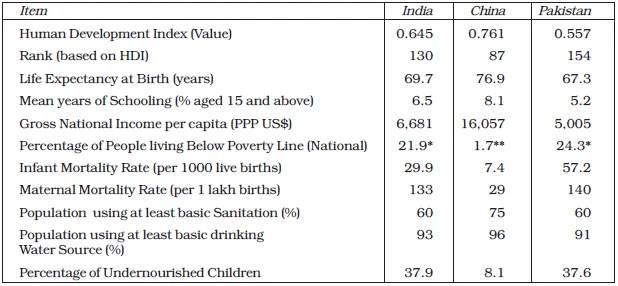![]() 4 Dec 2023
4 Dec 2023
The Growth Rate Indicators can be broken down into various categories, showcasing different aspects of economic development.
Here are some key growth rate indicators:

Annual Growth of Gross Domestic Product (%), 1980–2017

Sectoral Share of Employment and GVA (%) in 2018–2019

Trends in Output Growth in Different Sectors, 1980–2015

Some Selected Indicators of Human Development, 2017-2019
| Pre-Reform Period | Post-Reform Period | |
| India |
|
|
| Pakistan |
|
|
| China |
|
|
| Table: Development of India, Pakistan, and China | ||
Conclusion
Glossary: A Reference Guide to Economic Terms, Including Growth Rate Dynamics
|
|---|
<div class="new-fform">
</div>